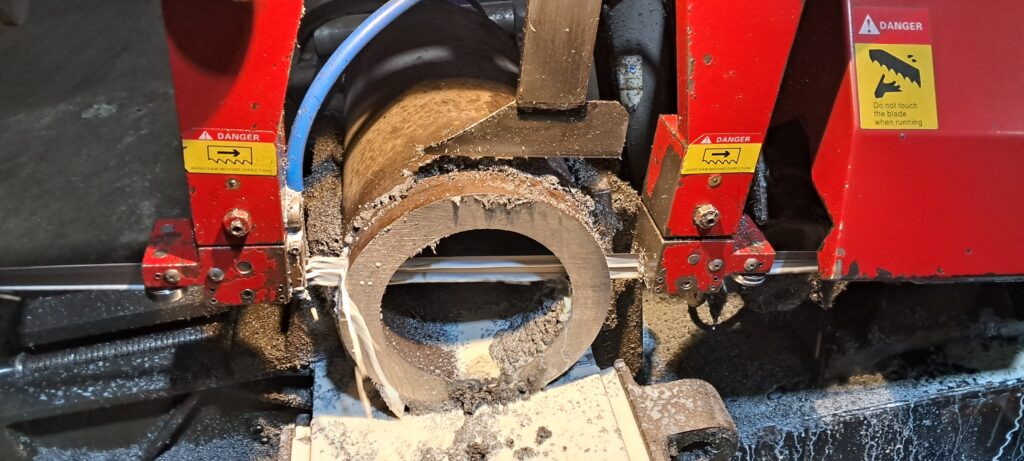How to use a Band Saw Blade
A band saw blade is a versatile cutting tool that is commonly used in woodworking, metalworking, and other industries. It is a long, continuous loop of metal with teeth along one edge, which is driven by two wheels to create a cutting action. Bandsaw blades come in different sizes and types, each designed for specific materials and applications.
A correct band saw blade can cut through wood or metal, in either straight or curved lines. These blades come in a variety of widths and tooth counts. Wider blades are better at straight cuts, while narrower blades are good for tighter curves. More teeth per inch provide a smoother cut, while fewer teeth per inch give a faster but coarser cut.
Choosing the Right band saw blade
The first step in using a bandsaw blade is to choose the right blade for the job. Bandsaw blades come in different sizes and types, each designed for specific materials and applications. Generally Metal cutting Bandsaw blades have smaller teeth and are designed to cut through metal and other hard materials.
Before using your bandsaw, make sure you have the right blade for the material you’re cutting. Using the wrong blade can damage the blade or the material and result in an unsafe situation. To know more about how to select the right bandsaw blade for your cutting application kindly read further down:
Selecting the right Band saw size
The size of a band saw blade is given in inches or mm. The size refers to the distance between the blade and its saw’s throat, or the column that supports the upper wheel.
Band saws can range in sizes (and price) from 2540mm to even bigger than 10,000mm . 2540mm Band saw machines are probably the most commonly used —and are readily available at reasonable prices.
Steps to Set Up a Band Saw Machine
For a band saw to cut in the best way, the blade must be installed correctly. This can be tricky but is not that hard.
1. Adjust the Blade Guides
The blade guides are the parts of the bandsaw that keep the blade in place and prevent it from wandering. There are typically two sets of blade guides on a bandsaw: the upper guides and the lower guides. Before using your bandsaw, adjust the blade guides so that they are close to the blade but not touching it.
To adjust the blade guides, loosen the lock knobs and move the guides so that they are close to the blade. Then, tighten the lock knobs to hold the guides in place. Make sure the blade is centred between the guides to ensure a straight cut.
2. Adjust the Blade Tension
The blade tension is the amount of pressure applied to the blade by the bandsaw’s tensioning system. Proper blade tension is important for straight cuts and prolonging the life of the blade. Before using your bandsaw, check the blade tension and adjust it if necessary.
To adjust the blade tension, loosen the tensioning knob or lever and adjust the tension so that the blade is tight but not too tight. A good rule of thumb is to pluck the blade like a guitar string; it should give a clear, musical tone. If it sounds dull or flat, the blade is too loose. If it sounds too high-pitched or breaks easily, the blade is too tight.
3. Adjust the Blade Height
The blade height determines how deep the blade cuts into the material. Before using your bandsaw, adjust the blade height so that it is just above the material you’re cutting.
To adjust the blade height, loosen the blade guide locking knobs and adjust the guide blocks to the desired height. Then, tighten the locking knobs to hold the blocks in place. A right blade height ensures smooth and even cut
4. Turn on the Bandsaw and Make the Cut
Once you have the blade guides, tension, and height adjusted, it’s time to make the cut. Turn on the bandsaw and wait for it to reach full speed before making the cut.
To make the cut, hold the material firmly against the table and slowly feed it into the blade. Use a steady and even pressure. Don’t force the material or try to go too fast, as this can result in a rough cut or even damage the blade.
5. Finish the Cut and Turn Off the Bandsaw
Once you’ve made the cut, let the blade come to a complete stop before removing the material. Finish the cut by holding the material firmly against the table and feeding it
Maintaining proper lubrication
The performance of an industrial band saw is highly dependent on how its blade is maintained. To get the most life and value, it’s important to use band saw blade lubricant since lubrication is vital to extending the life of the machine, for fast and precise application and best performance from the blade.
When it comes to the proper maintenance of your band saw, using a band saw blade lubricant ensures that it performs at its best. When applying lubricant to your band saw, there are three areas that need to be lubricated. To lubricate your industrial band saw properly, lubricant must be sprayed on the teeths as well as both sides.
This is to reduce the cutting sound as much as possible as well as to produce cuts that are both precise and clean.

